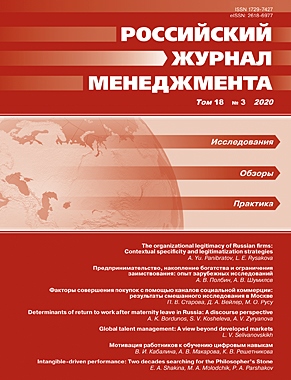Determinants of return to work after maternity leave in Russia: A logistic regression approach
DOI:
https://doi.org/10.21638/spbu18.2020.304Abstract
This paper aims to identify the determinants of return to work after maternity leave in Russia. Can an organisation influence employees’ decision about withdrawal from the market after leave arrangement, or does it fully depend on the contextual and personal characteristics of the employee, as assumed by the discourses of merit and choice? Logistic regression analysis helps to answer the raised questions, referring to responses of 721 mothers with previous working experience. The research revealed that employers indeed can improve inclusion of employees with childcare commitments, fostering their return after the maternity leave. Despite high regional diversity of Russian population, contextual specificity barely influences the decision of employees regarding their returning to work with the same employer, similarly to their level of education, firms’ equity or amount of children. Among personal characteristics, income was found to play an important role in return decisions, as well as the age of the smallest child. The paper contributes to the debates on the fluidity of gender and work identity as well as organizational control over the identity work.
Keywords:
childcare commitments, maternity leave, work system, Russia
Downloads
References
REFERENCES
Downloads
Published
How to Cite
Issue
Section
License
Articles of the Russian Management Journal are open access distributed under the terms of the License Agreement with Saint Petersburg State University, which permits to the authors unrestricted distribution and self-archiving free of charge.





